#domestic horse (equus ferus caballus)
Text

the baby has one parent's little face marking thing and the other's coat because they're a little horse family the world is a beautiful place
#☆#might become really obsessed with horses i'm not sure yet#maybe specifically mustangs and other feral horses... They intrigue me deeply#update i've been informed the thing is called a blaze but i just described it instead in the alt text bc i think clarity matters more than#erm. specificity??#also sorry if i don't know what colour the horses are. someone tell me if u like i like this stuff#🐯#domestic horse (equus ferus caballus)#equid#juvenile#top
59K notes
·
View notes
Note
Wouldn't it be funny if epple was part beastman. Instead of inheriting the physical traits, he inherited the behavioral traits. Based on his actions in game, what kind of beastman, do you think his father was? And would any of the yuus be able to pick up on it.
Well to start the only one who is 100% sure that he's part beastman is Vet!Yuu (obviously)
They have a clipboard with a list of possible animals and has successfully narrowed it down to one.
Horse
Yep, Epel is part horse beastman.
And here is Yuu's notes on the matter:
The patient has almost inexhaustible energy. Able to travel for hours on end as part of daily routine. Possibly wolf or ungulate genes.
Love of fruits and meats. Consider experiments where the patient must choose.
Test inconclusive, patient broke barriers to get both.
Test deemed unnecessary as many ungulates are opportunistic carnivores due to the extra energy meat provides.
The aggressive behavior isn't a sign of carnivorous mammalian leaning but will be considered.
The patient has ability to communicate with horses and not scare them like other beastmen.
Patient has "broken" horse in less than hour without showing excessive force.
Patient has a kick that caused internal damage to an opponent and has broken the femur (the hardest bone to break in the body).
Patient has snorted and huffed in anger at being told to get up after he has thrown himself on the ground. His tantrum was over being taken to a hair opponent.
Results conclude that the patients is of ungulate origin Equus ferus caballus (the domesticated horse)
The patient is obviously not the average horse. He is not a stallion but a young colt. As such his behavior is more erratic, easily agitated and stubborn.
This is considered good for most owners as it is said the wilder the colt the better they are as stallions. They are considered more dependable and harder workers.
Colts need training and discipline and I feel that Vil has him on the right track for development. Socialization, groundwork, and proper commitment to daily care is necessary.
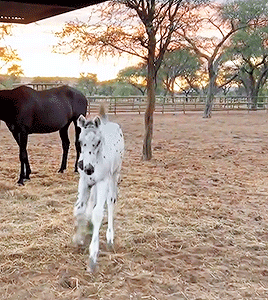
#vet!yuu#twisted wonderland#twisted wonderland x reader#twisted wonderland yuu#twst yuu#epel twisted wonderland#epel felmier x reader#twst epel#epel x reader#epel felmier
321 notes
·
View notes
Text
Animal of the Day!
Icelandic Horse (Equus ferus caballus)

(Photo from Guide to Iceland)
Conservation Status- Unlisted
Habitat- Domesticated
Size (Weight/Length)- 380 kg; 140 cm in height
Diet- Grasses
Cool Facts- Despite being called a horse, the pony-sized Icelandic horse comes straight out of The Hobbit. Their long fur and thick manes allows them to live out extremely cold winters. Icelandic horses most likely went to Iceland as companions of the Scandinavians. Overtime, the horses adapted to their new snowy homes and countless other horses and ponies, including the Shetland pony and the Norwegian Fjord horse, were bred from these valiant steeds. Now a protected breed, Icelandic horses are carefully documented so that the breed can stay pure.
Rating- 13/10 (Fuzzy horses are adorable.)
Animtober- Ponytail (Pony-sized.)
#Animal of the day#Animals#Mammals#Horses#Pony#Wednesday#October 19#Icelandic horse#biology#science#conservation#the more you know#Animtober#Inktober#Ponytail
212 notes
·
View notes
Note
If you're still taking prompts I would absolutely love to see your take on "learning more about their interests so they have a common thing to talk about" for Geraskier ♡ Have a lovely day, I love to read your works.
Thank you so much, dear 💜
Jaskier had never been very studious. Oh, sure, he had his degree and all, but that was mostly because he was really good at pretending to know things and fill in the gaps with educated guesses. Somehow, it had all worked out. He had mastered history somehow, despite mostly using his text book to hide a bottle of ale behind it.
So. Jaskier had never been one sit sit over books and study.
Until now that was. Because now, it was a matter of life and death. Well, perhaps he was being a bit dramatic, but it certainly was a matter of great importance.
He drew his brows together in CO centration and leaned closer to the book, as if that would change anything about his ability to absorb the information.
The horse (Equus ferus caballus) is a domesticated, one-toed, hoofed mammal. It belongs to the taxonomic family Equidae and is one of two extant subspecies of Equus ferus (see footnotes).
Sweet Melitele, he couldn't count the times he had read that line and he still was none the wiser for it. And it was on the first page. The first sentence to be exact. He felt like there was simultaneously no new information and too much information in that one line.
He gritted his teeth and forced himself to read on.
He could do that. For Geralt, he could make it through this whole damn book and the five other books on different horse breeds, the history of war horses and the proper way of taking care of a horse, he had managed to hunt down at the Academy of Oxenfurt.
He would read them and he would understand them and he would woo Geralt with his impressive knowledge about horses.
He just had to keep reading.
Horses in the subspecies caballus are domesticated, although some domesticated populations...
Jaskier's eyelids grew heavy and he had to stifle a yawn. Somehow it was so much easier and more interesting to listen to Geralt talk about horse facts than it was to read about them. How could a book be so boring in comparison? Geralt wasn't even that great of a story teller. But the way he relaxed, his shoulders loosing their tension and an excited smile spreading over his face whenever he went on about the merits of different horse breeds somehow made it impossible not to hang on his lips.
Jaskier wanted so desperately to be able to talk to him about this topic that made Geralt so happy.
He flipped through the book until he found a picture. Even that was boring. Countless complicated annotations described different parts of the horse's anatomy.
He narrowed his eyes, but he couldn't for the life of him concentrate. His mind kept bouncing from thinkung about Geralt's smile to telling him to focus. It left no room in his head for the information in the book.
With a groan, Jaskier dropped his head on the book. At least it made a decent pillow. That was the least it could do, for making him so sleepy.
Maybe, Jaskier wouldn't be able to make it through that book after all. But maybe, he didn't have to. Maybe it would be much better to simply ask Geralt about horses.
With a smile on his lips, Jaskier fell asleep and dreamed about the way Geralt would light up when he saw that Jaskier wanted to listen to him rant endlessly about horses.
(credit for the horse facts goes to this Wikipedia article)
49 notes
·
View notes
Text

Horse (Equus ferus caballus)
How to summarise one of the most extensively-studied animals in the world? Horses were first domesticated by humans about 6000 years ago on the Eurasian steppe. They are the most common animal ridden by humans, and have historical importance for a variety of cultures around the world. They’ve been used in sports like horse racing, for transport, farming, ranching, and patrolling police, for war, and for meat, milk, and other materials. Hundreds of horse breeds have been developed for practical and aesthetic purposes, and mythical horse-like creatures are found in many stories and cultures. Feral horse populations have also been established in places like America and Australia, where they may wreak havoc on ecosystems that did not evolve to accommodate them.
#markhors-menagerie#animal facts#animals#biology#fun facts#ungulates#odd toed ungulates#horse#horses
3 notes
·
View notes
Text
Amendment
Characters: Familiars and Their Handlers
To be updated as time goes on.
-
This list includes the familiars of all major and minor characters.
Kingdom of Vale
Handler: Taiyang Xiao Long
Familiar Name(s): Zwei
Species: Domestic dog (Canis familiaris)
Handler: Coco Adler
Familiar Name(s): Nyla
Species: War boar (Sus rufistriatus)
Handler: Amber Ochoa
Familiar Name(s): Arion
Species: Domestic horse (Equus ferus caballus)
Handler: Raya Austringer
Familiar Name(s): Chester
Species: Goshawk (Accipiter gentilis)
Handler: Ozpin
Familiar Name(s): [REDACTED]
Species: [REDACTED]
Handler: Derecho
Familiar Name(s): Etterath, Tournesol, Austice
Species: Common magpie (Pica pica), red elk (Erythrocervus sylvestris), red fox (Vulpes vulpes)
-
Kingdom of Mistral
Handler: Shiro Wan
Familiar Name(s): Suki
Species: Domestic cat (Falis catus)
Handler: Coram Hyssop
Familiar Name(s): Shaw, Anrique
Species: Osprey (Pandion haliaetus), white-tailed eagle (Haliaeetus albicilla)
-
Kingdom of Atlas
Handler: Onyx Churmon
Familiar Name(s): Perry
Species: Takin (Budorcas mistralensis)
-
Kingdom of Vacuo
Handler: Amari Stoll
Familiar Name(s): Ghost
Species: Cheetah (Acinonyx jubatus)
Handler: Sayon Toren
Familiar Name(s): Harper
Species: Domestic dog (Canis familiaris)
#amendment#worldbuilding#characters#familiars and their handlers#familiars#ocs#this is the last post i'm putting up before i focus on answering my inbox#sorry for the delay!#also#some of these names should look familiar :3#writing
8 notes
·
View notes
Text
Plural of Horse: What's the Correct Term?
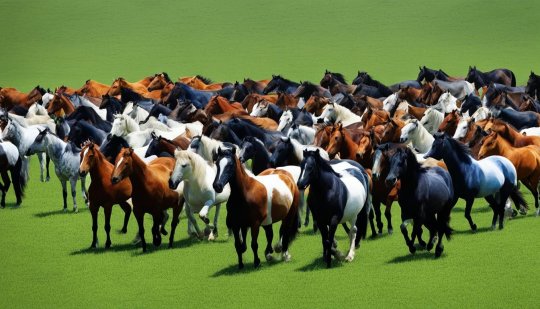
The word "horse" holds a significant place in language, history, and culture. These majestic animals have been integral to human civilization, symbolizing strength, freedom, and grace. The plural of "horse" is a basic yet vital aspect of English grammar, reflecting its frequent use in various contexts, from equestrian sports to literary metaphors.
The Singular and Plural Forms of Horse
Singular: HorsePlural: Horses
The plural of 'horse' follows a regular pattern in English, where an 's' is added to the end of the singular form.
Understanding Horse
Definition of Horse:
A horse (Equus ferus caballus) is a large, four-legged mammal known for its speed, strength, and beauty. They have been domesticated by humans for thousands of years for transportation, labor, and companionship.
Usage of Horse:
The term 'horse' is used in various contexts, including biology, sports, history, and literature. It symbolizes different concepts in different cultures, from power and nobility to freedom and wildness.
Examples of Horse in Sentences
- Singular Usage: "The horse galloped across the field with remarkable speed."
- Plural Context: "The stable houses several horses of different breeds."
- Historical Reference: "Horses played a crucial role in medieval warfare."
- In Literature: "In many folktales, the horse is a symbol of wisdom and loyalty."
- Sports and Recreation: "Horse racing is a popular sport around the world."
Common Mistakes and Confusions
- Misuse in Collective Terms: While 'horses' is the plural, terms like 'a herd of horse' are incorrect. The correct term is 'a herd of horses.'
- Confusing with Similar Animals: Sometimes, people mistakenly refer to ponies, donkeys, or mules as 'horses,' though these are distinct species or breeds.
Commonly Asked Questions
Q: Can 'horses' refer to different types of horse breeds?A: Yes, 'horses' can be used to collectively refer to various breeds.
Q: Is it ever correct to use 'horse' as a plural?A: No, the plural of 'horse' is always 'horses.' Using 'horse' to refer to multiple animals is grammatically incorrect.
Conclusion
The plural of horse, 'horses', is a simple yet essential aspect of English grammar. Understanding and using the correct plural form is important not just linguistically but also in appreciating the diverse roles these animals have played in human history and culture.
FAQ
What is the plural of horse?
The plural of horse is 'horses'.
How do you form the plural of the word horse?
To form the plural of the word horse, simply add an "s" to the end of the word.
When should I use the word "horse" and when should I use "horses"?
Use the word "horse" when referring to a single animal. For example, "I saw a horse in the field." Use the word "horses" when referring to two or more animals. For example, "I saw two horses in the field."
Are there any rules to follow for forming plurals of regular nouns like "horse"?
Yes, there are some basic rules to follow. Most nouns can be made plural by simply adding an "s" to the end of the word. However, if the singular noun ends in "s", "x", "z", "sh", or "ch", you need to add "es" to form the plural. For example, one box becomes multiple boxes, and one church becomes multiple churches. Another rule is to change the "-y" to "-ies" for words that end in a consonant + "-y". For example, baby becomes babies. Finally, for words that end in a vowel + "-y", you can add either "s" or "es". For example, key becomes keys.
Read the full article
0 notes
Text
DONKEYS, MULES AND SHETLAND PONIES
Located in the south east of the UEA campus, behind the lake, is a field of animal pens that is home to a number of donkeys, mules and shetlands ponies (as well as the occasional rabbit or fox sleeping in the grass). Below is a ma illustrating where to find them, and a couple showing the shetland ponies:
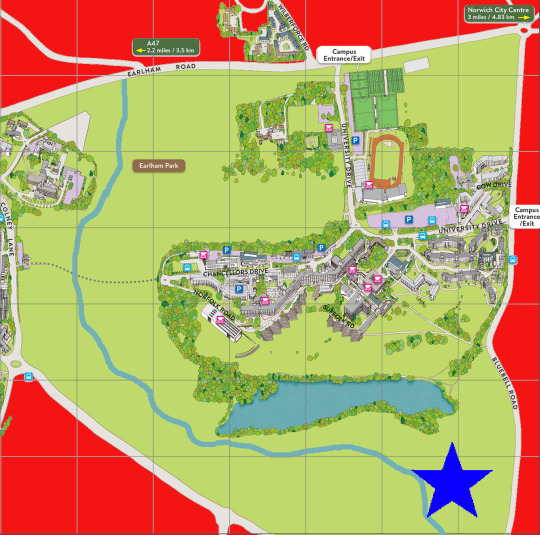

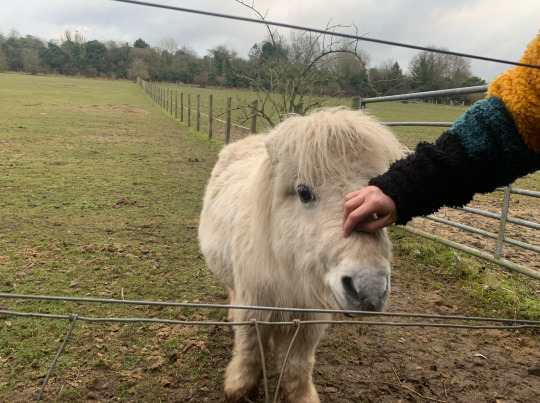
These pens are actually an animal sanctuary for the animals that live there, having most likely been abandoned or mistreated. However most are happy enough to say hello, just as long as you bring a carrot or two.
Shetland ponies are a Scottish breed of pony (Equus ferus caballus) that originate from the Shetland Isles, hence their name. Their short stocky bodies and thick coat made them very useful as pack animals, as well as to drive and ride. Miniature Shetlands have even been trained as guide horses, who perform the same role as guide dogs. The sad fact about these cute little guys are how mistreated they are nowadays in this country. They are often neglected or outright abandoned due to being purchased in haste, rising costs, and having no resale value. In the wild they are evolved to walk very long distances, so when they are kept as pets they have a tendency to become obese, which takes away their perceive aesthetic pleasure to the owner. Also in their own pen are the mules:

Mules are a domestic hybrid, born from a male donkey (known as a jack) and a female horse (known as a mare). Due to this hybridisation, a mule has 63 chromosomes, which in most cases make them infertile. Mules have been traditionally used as pack animals, due to its endurance and ability to carry up to 20% of its body weight, but are also bred around the world for meat. They have been bred and used in these ways since before 1000BC; a painting in the Tomb of Nebamun (shown below), which is dated around 1350 BC, shows a chariot being drawn by (supposably) mules:
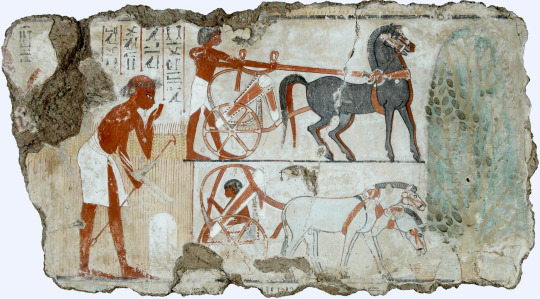
Nowadays, mules are still used worldwide as working pack animals, or pulling carts through markets. This is because they tend to live longer than horses whilst requiring less food, They can sense danger better and are more cautious than horses or donkeys, making them safer to ride across rocky, dangerous terrains. In the UK they have traditionally been used in mule rides for tourists on the beach. Here at the sanctuary, they are very wary of people, and only the sight of a full carrot is enough to gently coax them over. In the next pen we find their biological halves, the donkey:
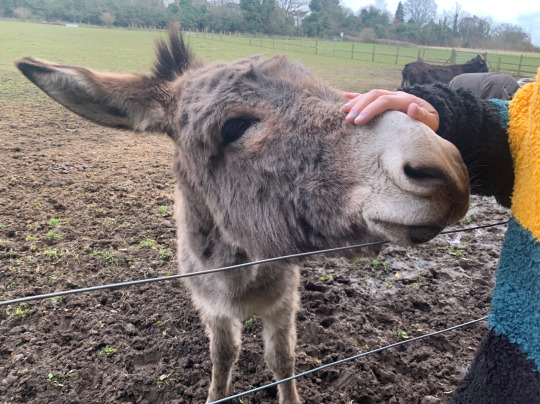
Obviously similar to mules in many ways, donkeys are also used worldwide as pack or draught animals. Over here, in the species-rich grassland of The Weston Valley, donkeys have been used to graze, similarly to the cows in Marston Marsh in Norwich. Using donkeys to graze, rather than machinery, increased the species diversity because they take out the coarser, dominant species the could outcompete or outshade smaller herbs and fine grass, as well as wildflowers. They enjoy eating these thick, woody (and even prickly, like Eeyore) species, so are pros at controlling shrub species that can encroach and kill wildflowers. Its a win-win for the donkeys too as they tend to get better nutrition than in a single-grass paddock, as the woody vegetation tends to have lower sugar levels and more fibre. According to The Donkey Sanctuary, who tend to the donkeys at The Weston Valley, if allowed to graze and more around a large area freely, donkeys will leave behind grasses of varying heights and structures, creating a range of conditions for species to establish and thrive, creating more biodiversity - again like the cows of Marston Marshes!
0 notes
Text

Equus ferus Caballus - The Horse.
"Men born in the year of the horse are independent and have a craving for freedom. They are easy going and treat everyone sincerely. They also often overestimate themselves. Even if they know what their faults are, it’s hard for them to change. Women born in the Horse year are beautiful and have a refreshing aura. Sometimes they are gentle ponies, other times they can become wild stallions. Regardless, they are impressive and good at what they do. Motivation and help from others are not important. As long as they’re doing what they like, they will succeed."
- Horse (Zodiac) on wikipedia.
The connection between Jessie and horses is obvious, and goes deep, they are already an animal that has defined her life through her connection with them, but I am also here to argue why it is an exceptional parallel to her. I cannot fully do it justice, but I hope you get the themes.
Firstly there is the zodiac interpretation of people born in the year of the horse, and the associations with that, all of which fit Jessie.
Secondly, horses are animals of contradictions. They are at once gentle and fierce, playful and noble, domesticated and wild, herd animals and symbols of independence. All of this fits well with Jessie, who is all of those contradictions and more. Horses are a symbol of freedom and independence and strength, but they're also an incredibly sensitive animal. They are powerful and spirited and love to run, but throughout human history they have been our friend and often our greatest technology - in agriculture, warfare and exploration, the horse has literally built empires and changed the world.
People can also find horses hard to read, they are big and intimidating and their body language is not always natural to people who don't know horses. Again, Jessie can be difficult to read, unpredictable to all but those who know her best, reactive to the slightest thing and never indicating whether she will opt for flight or fight.
1 note
·
View note
Text
Horse
For other uses, see Horse (disambiguation).
The horse (Equus ferus caballus)[2][3] is a domesticated, odd-toed, hoofed mammal. It belongs to the taxonomic family Equidae and is one of two extant subspecies of Equus ferus. The horse has evolved over the past 45 to 55 million years from a small multi-toed creature, Eohippus, into the large, single-toed animal of today. Humans began domesticating horses around 4000 BC, and their domestication is believed to have been widespread by 3000 BC. Horses in the subspecies caballus are domesticated, although some domesticated populations live in the wild as feral horses. These feral populations are not true wild horses, as this term is used to describe horses that have never been domesticated. There is an extensive, specialized vocabulary used to describe equine-related concepts, covering everything from anatomy to life stages, size, colors, markings, breeds, locomotion, and behavior.
Horses are adapted to run, allowing them to quickly escape predators, possessing an excellent sense of balance and a strong fight-or-flight response. Related to this need to flee from predators in the wild is an unusual trait: horses are able to sleep both standing up and lying down, with younger horses tending to sleep significantly more than adults.[4] Female horses, called mares, carry their young for approximately 11 months, and a young horse, called a foal, can stand and run shortly following birth. Most domesticated horses begin training under a saddle or in a harness between the ages of two and four. They reach full adult development by age five, and have an average lifespan of between 25 and 30 years.
0 notes
Text

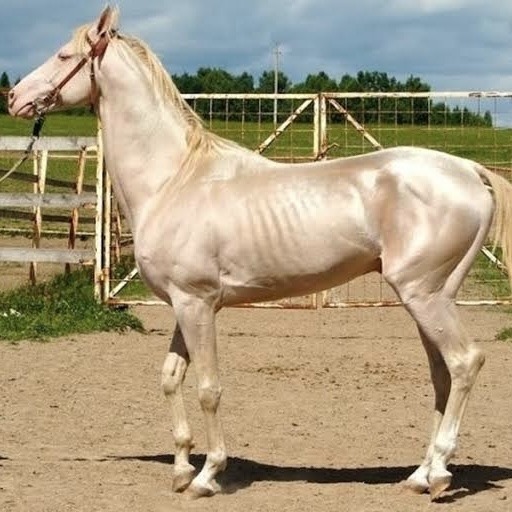
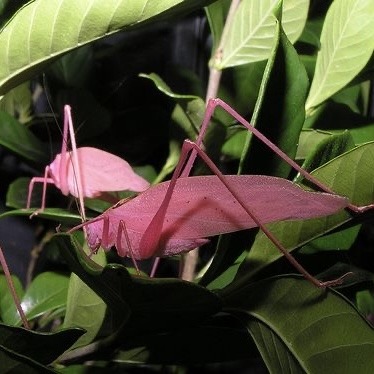


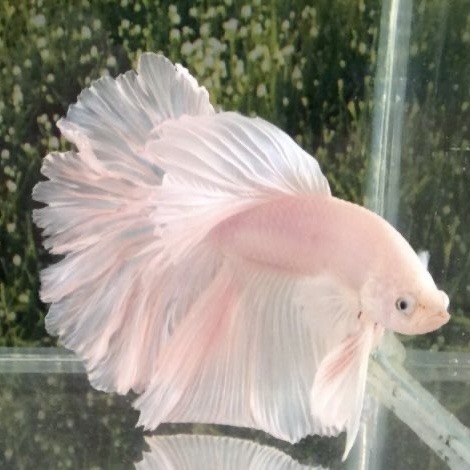


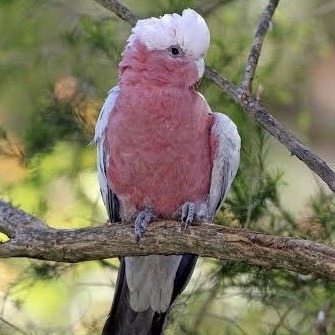
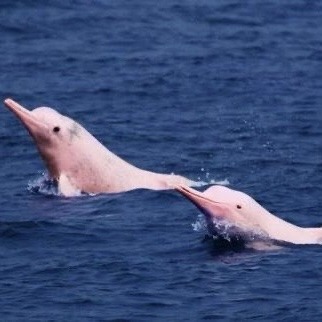
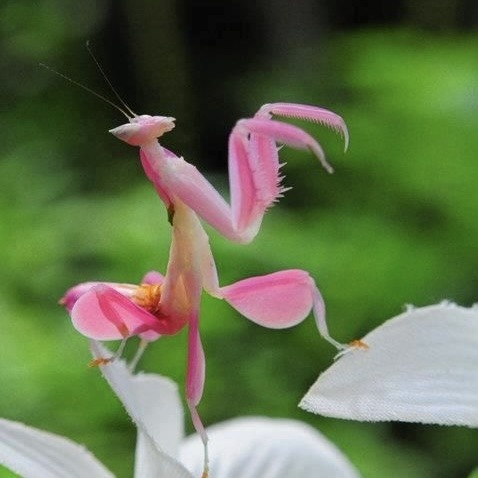
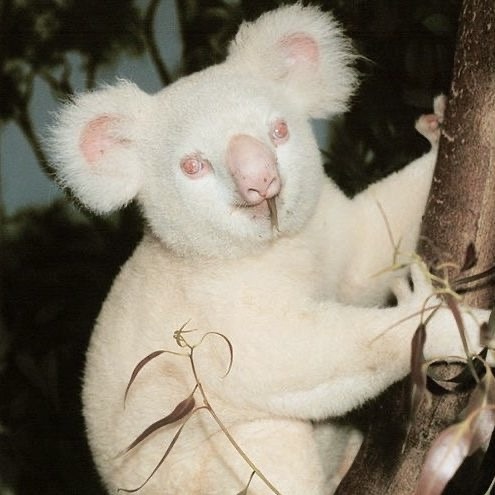
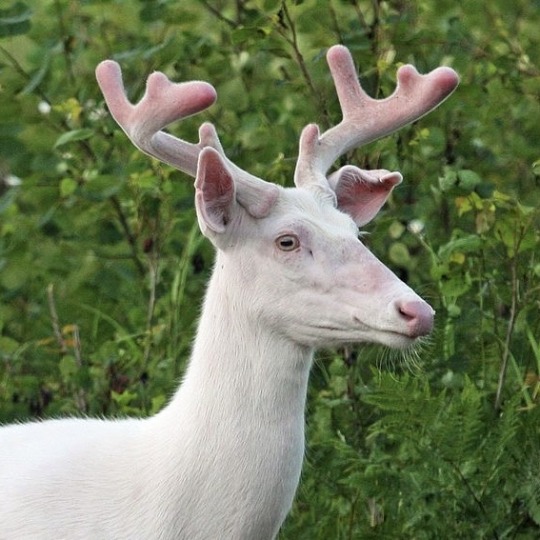
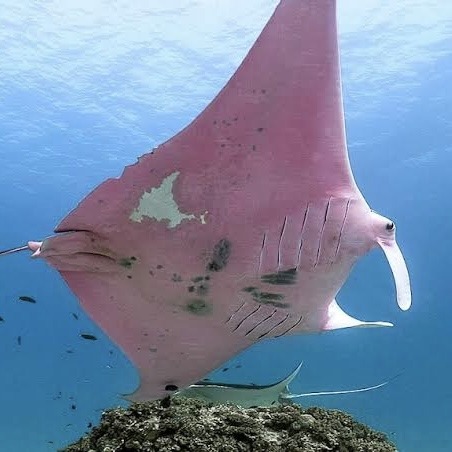

some examples of pink in the animal kingdom. while there are no mammals with pink fur, it's naturally found in some birds, insects and fish. otherwise, usually due to genetic pigment mutations like albinism or leucism, some animals appear pink due their extreme paleness – their blood is visible through their skin!
#☆#🐯#colour mutation#leucism#albinism#oddity#blushing phantom (cithaerias pireta)#domestic horse (equus ferus caballus)#oblong-winged katydid (amblycorypha oblongifolia)#axolotl (ambystoma mexicanum)#corn snake (pantherophis guttatus)#betta (betta splendens)#roseate spoonbill (platalea ajaja)#pink fairy armadillo (chlamyphorus truncatus)#galah (eolophus roseicapilla)#amazon river dolphin (inia geoffrensis)#orchid mantis (hymenopus coronatus)#koala (phascolarctos cinereus)#white-tailed deer (odocoileus virginianus)#reef manta ray (mobula alfredi)#common bottlenose dolphin (tursiops truncatus)#theee koala deer and snake are albinistic + axolotl is leucistic and the ray is a... mutation of some kind#oh and the katydid is that thing where they turn pink when they're erythristic afaik
36 notes
·
View notes
Text

Camargue horse (Equus ferus caballus)
Photo by Malin Wengdahl
#domestic#camargue horse#domestic horse#horse#equus ferus caballus#equus caballus#equus ferus#equus#equini#equinae#equidae#hippomorphia#perissodactyla#ungulata#scrotifera#laurasiatheria#boreoeutheria#eutheria#euungulata#mammalia#tetrapoda#vertebrata#chordata
92 notes
·
View notes
Text

Bosanski brdski konj (Bosnian mountain horse)
Equus ferus caballus
Source: Korisnik Agan
3 notes
·
View notes
Photo

Equus ferus caballus - Domestic Horse
#domestic horse#horse#arabian horse#equus#ferus#caballus#equidae#perissodactyla#mammalia#chordata#animalia#least concern#north america#south america#africa#europe#asia#australia#widespread#terrestrial#grassland#steppe#semi-arid#desert#urban#the faunal frontier#thefaunalfrontier
139 notes
·
View notes
Photo
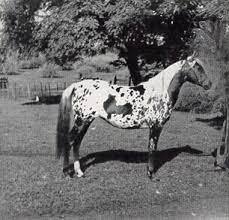
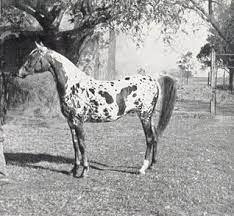
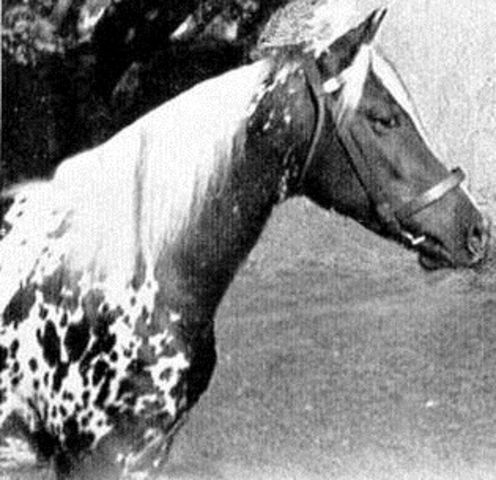

Trabag (Tatar x Adua) - 1946 Arabian Mare
Article About Manchado Coloration - there’s a lot of debate as to whether it has an environmental cause, or is just an extremely recessive gene that only appears in horses from Argentina because of the founder effect. Another theory is that it could be an extreme somatic mutation. As far as I know, Trabag is the only Arabian that’s ever displayed this color.
Another thing the article mentions - “Examining the pre-studbook era of Argentina brings up an interesting argument on the evolution of horses as a whole. In Patagonia, the area that would become the Americas millions of years later, there lived a species of patterned horses called Hippidion Saldiasi. These primitive horses co-existed with humans, and their extinction to this day remains a mystery. There are some theories suggesting that some of these animals survived until Europeans arrived and began influencing the breeding populations of horses post 1492.”
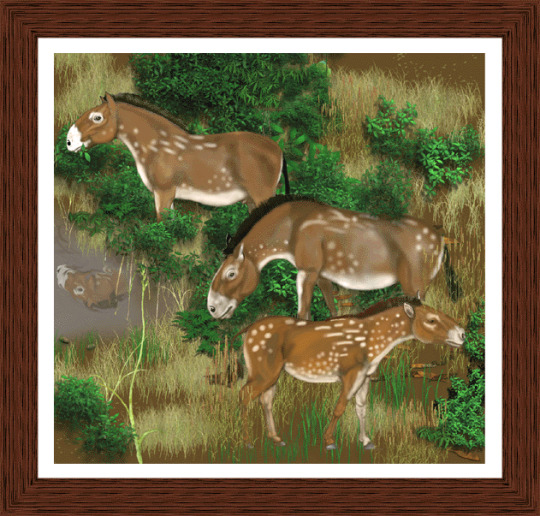
Now, that doesn’t explain why the coloration would pop up in an Arabian, so I’m skeptical that potential interbreeding with modern horses is the cause of this coloration, but it is an interesting side bit. Another post about this. Personally, I don’t think it’s likely that Equus Ferus Caballus were still around when the Europeans came (or if they were, it was in an extremely limited area, making present-day mustangs outside of that specific area non-native to the rest of the continental states, unless you use a very broad definition of native that ignores the continuous or almost continuous presence in a certain area requirement and focuses primarily on area of origin - but that is not the way I was taught to apply the term. By that logic, wooly mammoths would still be considered native to North America if they were brought back and reintroduced, even though the environment has changed significantly since they’re been gone and they would starve and/or destroy everything without human intervention), BUT I do think some Native Americans did interact with and possibly semi-domesticate horses (interestingly, there are very little archeological sites indicating that horses in North America being commonly hunted compared to Europe and Asia, and as far as I know none in South America - which to me shows that they might have been considered sacred or of more important value by many people, and makes me doubt that overhunting played a big role, if any, in their extinction as commonly hypothesized) which is why there are oral records.
106 notes
·
View notes
Note
So I always thought horses were an invasive species in North America but I heard this argument today and I dont know what to make of it. "There was a native horse species in north america 10,000 years ago which went extinct, so modern horses are just a successful reintroduction." I wanted to know what you thought? IMO they're invasive since a lot of the predators that hunted these native horses also went extinct during the american megafauna extinction.
While recent evidence would suggest the extinct horses in North American, Przewalski’s horse, the tarpan and domesticated horse are the same species - Equus ferus, they are however, all different subspecies.
This means that the pre-domesticated horse and the modern domesticated horse (Equus ferus caballus) are different subspecies, although they’re genetically indistinguishable. This means that horses that are either domesticated themselves or are from ancestors that are domesticated are not considered “wild” horses but untamed feral horses.
It becomes an argument over what defines a subspecies or a separate species then which is a question that has no real answer either. I’d personally consider them still an invasive species that was introduced to the North Americans well after they have already become domesticated. But there’s no one solid answer because it seems to still be a debated topic within science at the moment.
85 notes
·
View notes